Hanging out in Fort St. John
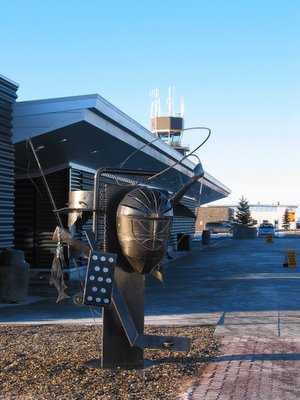 So after a pleasant Christmas break, it's back to the air. With Navair grounding themselves while investigating their accident in Terrace, there was cargo lying around that needed a new (Temporary? maybe?) way to get from A to B. We've happened to pick up some of that extra work. Twice this past week I've flown a route that takes me out of YVR around 0630, up to Prince George, Dawson Creek, and Fort St John. We arrive in Fort St John around 1100ish Mountain time, where we head to a hotel to relax until we leave to head south at 1700. This run involves splitting my duty day, something that I haven't had to do much of (if at all) during my career so far. Basically, Canadian Aviation Regulations dictate that my duty day (the time I show up to work until the time I leave) be no longer than 14 hours. However, one exception to the rule is the duty day split. If the company gives a pilot advanced warning, they can extend the duty day to a maximum of 17 hours, if they allow the pilot to rest for a minimum 4 hours in the middle of the duty day. The rest must take place in suitable accommodation (preferably your home, but usually in a hotel) and the pilot must not have the rest interrupted by the company. For this run I arrive at the airport around 0515 and don't leave until roughly 2030, requiring a duty day between 15 and 16 hours. So, we check into the hotel in Fort St John, have some lunch, and basically hang out for the rest of the afternoon.
So after a pleasant Christmas break, it's back to the air. With Navair grounding themselves while investigating their accident in Terrace, there was cargo lying around that needed a new (Temporary? maybe?) way to get from A to B. We've happened to pick up some of that extra work. Twice this past week I've flown a route that takes me out of YVR around 0630, up to Prince George, Dawson Creek, and Fort St John. We arrive in Fort St John around 1100ish Mountain time, where we head to a hotel to relax until we leave to head south at 1700. This run involves splitting my duty day, something that I haven't had to do much of (if at all) during my career so far. Basically, Canadian Aviation Regulations dictate that my duty day (the time I show up to work until the time I leave) be no longer than 14 hours. However, one exception to the rule is the duty day split. If the company gives a pilot advanced warning, they can extend the duty day to a maximum of 17 hours, if they allow the pilot to rest for a minimum 4 hours in the middle of the duty day. The rest must take place in suitable accommodation (preferably your home, but usually in a hotel) and the pilot must not have the rest interrupted by the company. For this run I arrive at the airport around 0515 and don't leave until roughly 2030, requiring a duty day between 15 and 16 hours. So, we check into the hotel in Fort St John, have some lunch, and basically hang out for the rest of the afternoon.
The city of Fort St John has a long interesting history. It lays claim to being the first Non-native settlement on the mainland of British Columbia. As with much of Western Canada, it owes a great deal of it's history to the fur trade. Established first as a fur trading post known as Rocky Mountain House, it would be abandoned, and re-established 6 more times under many different names, being first called Fort St John in 1821. It saw large settlement in the early 20th century when European settlers arrived to homestead the Peace district. In the late 1930's, the Fort St john airport was built as an important link on an airway from Edmonton to Whitehorse known as the Northwest staging route. Grant McConachie's United Air Transport, which was already providing regular mail service from Edmonton to the Peace River region, was itching to expand to the Yukon. After some expeditionary flights, using airstrips already in place, building their own strips, and changing from a fleet of ski and float planes to wheels, a scheduled service began.
In the late 1930's, the Fort St john airport was built as an important link on an airway from Edmonton to Whitehorse known as the Northwest staging route. Grant McConachie's United Air Transport, which was already providing regular mail service from Edmonton to the Peace River region, was itching to expand to the Yukon. After some expeditionary flights, using airstrips already in place, building their own strips, and changing from a fleet of ski and float planes to wheels, a scheduled service began. As the 30's drew to a close and war appeared on the horizon, the route from Edmonton to Whitehorse developed rapidly. Many strips were built by communities along the flight path,with the hopes that McConachie's airline would land on their strip. As well, upgraded radio beacons were installed allowing for safer flight. In 1939, United Air Transport became Yukon Southern Air Transport. Passengers and mail flew into Fort St John from Vancouver and Edmonton where they transferred onto one aircraft for the flight up to Whitehorse. McConachie extended his route to Fairbanks Alaska and had plans to take his airline through Russia to the Orient. However, the attack of Pearl Harbour and the invasion of the Aleutian Islands saw YSAT's resources shifted to other areas.
As the 30's drew to a close and war appeared on the horizon, the route from Edmonton to Whitehorse developed rapidly. Many strips were built by communities along the flight path,with the hopes that McConachie's airline would land on their strip. As well, upgraded radio beacons were installed allowing for safer flight. In 1939, United Air Transport became Yukon Southern Air Transport. Passengers and mail flew into Fort St John from Vancouver and Edmonton where they transferred onto one aircraft for the flight up to Whitehorse. McConachie extended his route to Fairbanks Alaska and had plans to take his airline through Russia to the Orient. However, the attack of Pearl Harbour and the invasion of the Aleutian Islands saw YSAT's resources shifted to other areas.  The Canadian and US Government's immediately hatched a plan to build airstrips every 100 miles between Edmonton and Fairbanks. The airstrips were built for the purpose of refueling and servicing aircraft destined for Alaska and the Pacific. In order to get supplies to the strips, as well as get armed forces into Alaska quickly, a road would have to be built. Starting at Dawson Creek, and ending at Fairbanks, it took Canadian and United States Army engineers 8 months to build the 1500 mile route that is now known as the Alaska Highway. Because of their knowledge on the local area and the fact they built some of the airstrips to be used, YSAT was given permission to obtain aircraft and fuel required to support the project from the Canadian Government. This included being given 3 Lockheed 14s (the first aircraft in Canada to have flight attendants) pulled out of service from the Government's baby, Trans-Canada Air Lines. On January 31st of 1941, Yukon Southern was bought by the Canadian Pacific Railway, along with 10 other small Canadian bush operations, and became Canadian Pacific Airlines. Through the years, Canadian Pacific would become Canadian Airlines, which was recently bought by rival Air Canada. Today, Air Canada, along with it's wholly-owned subsidiary, Air Canada Jazz, still flies into Fort St John and other airfields originally serviced by McConachie's airline.
The Canadian and US Government's immediately hatched a plan to build airstrips every 100 miles between Edmonton and Fairbanks. The airstrips were built for the purpose of refueling and servicing aircraft destined for Alaska and the Pacific. In order to get supplies to the strips, as well as get armed forces into Alaska quickly, a road would have to be built. Starting at Dawson Creek, and ending at Fairbanks, it took Canadian and United States Army engineers 8 months to build the 1500 mile route that is now known as the Alaska Highway. Because of their knowledge on the local area and the fact they built some of the airstrips to be used, YSAT was given permission to obtain aircraft and fuel required to support the project from the Canadian Government. This included being given 3 Lockheed 14s (the first aircraft in Canada to have flight attendants) pulled out of service from the Government's baby, Trans-Canada Air Lines. On January 31st of 1941, Yukon Southern was bought by the Canadian Pacific Railway, along with 10 other small Canadian bush operations, and became Canadian Pacific Airlines. Through the years, Canadian Pacific would become Canadian Airlines, which was recently bought by rival Air Canada. Today, Air Canada, along with it's wholly-owned subsidiary, Air Canada Jazz, still flies into Fort St John and other airfields originally serviced by McConachie's airline.
Tomorrow I'm up early, 0330, to depart YVR at 0530. The plan is to head to Kamloops, Prince George, Kemess, and Smithers. I'll arrive in Smithers likely around 0900ish, just in time for breakfast. It'll be another split day as we'll hang out in Smithers until 1730 before leaving for Terrace (first time flying to Terrace for me) before heading back to Vancouver.
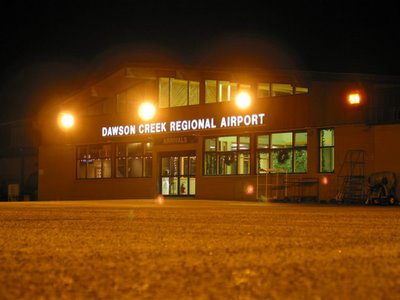 The very cozy Dawson Creek airport Terminal. Unfortunatly for us, the cafe is always closed when we go through. It looks like they serve some good meals and snacks.
The very cozy Dawson Creek airport Terminal. Unfortunatly for us, the cafe is always closed when we go through. It looks like they serve some good meals and snacks. 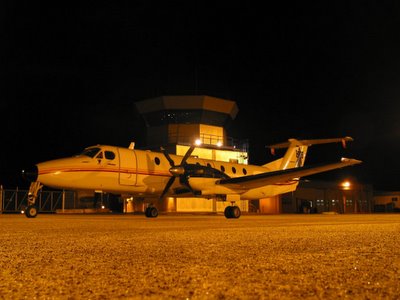 Parked in front of the Flight Service Station at the Dawson Creek Airport. Due to a declining number of flights, this FSS will soon shut down.
Parked in front of the Flight Service Station at the Dawson Creek Airport. Due to a declining number of flights, this FSS will soon shut down.


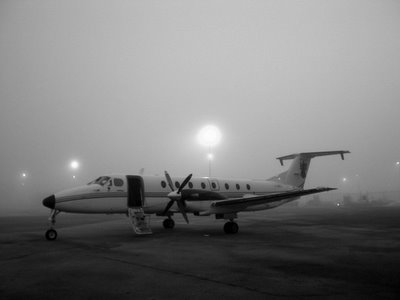
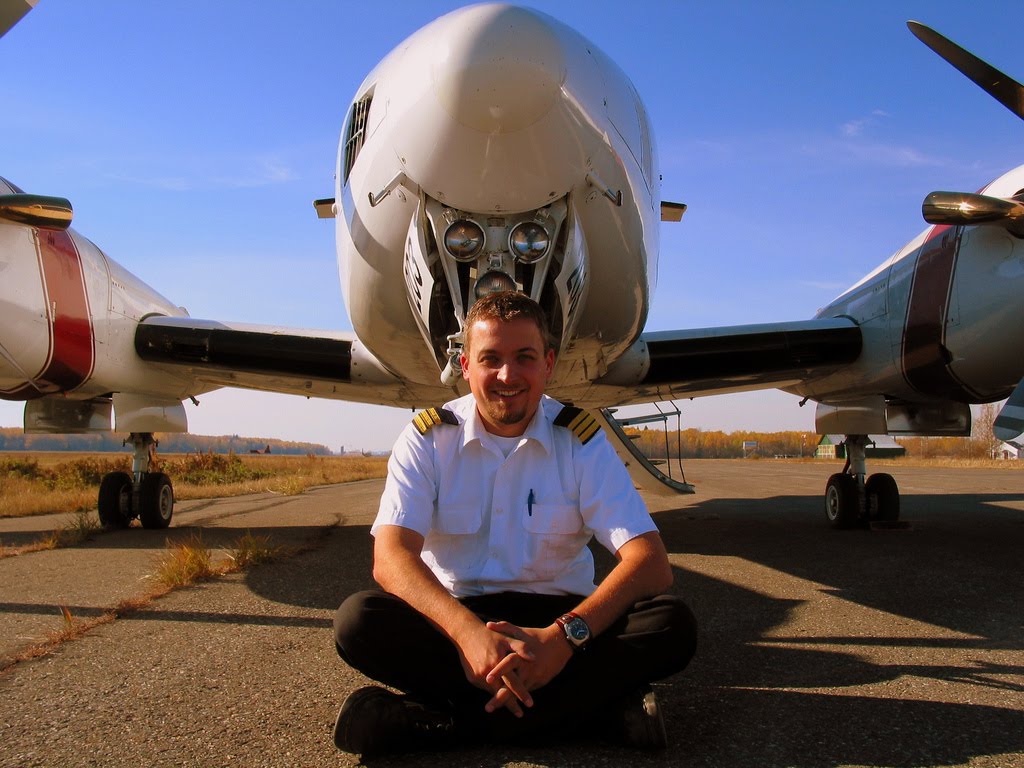



3 comments:
That's a good bit of research. Interesting days you've been having lately.
Appreciate the historical info!
I know that F.S.J. has a lot of interesting history I live here but the thing thaat i do not like about it from a young girl's oppinion is that there is no good shopping
Post a Comment